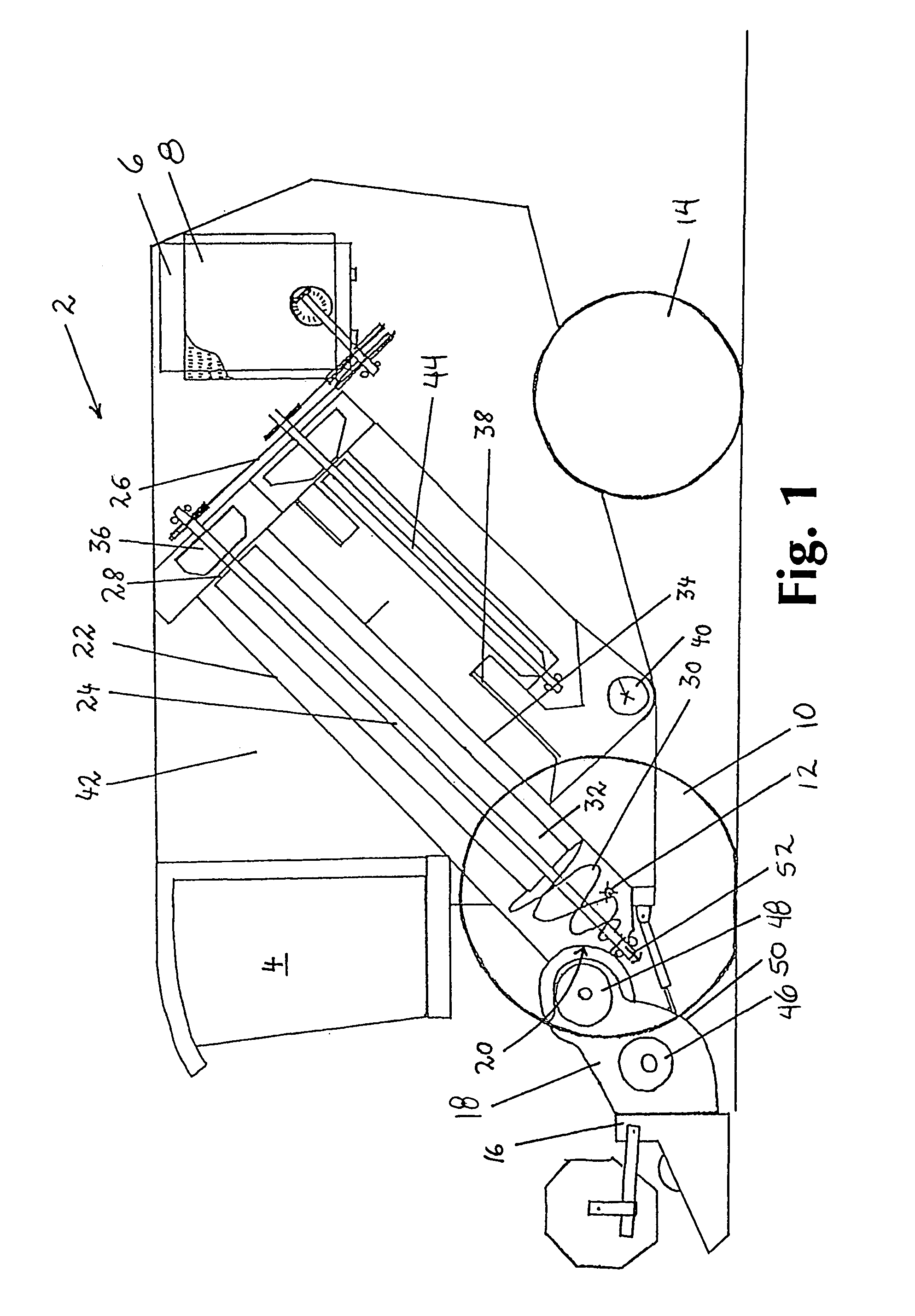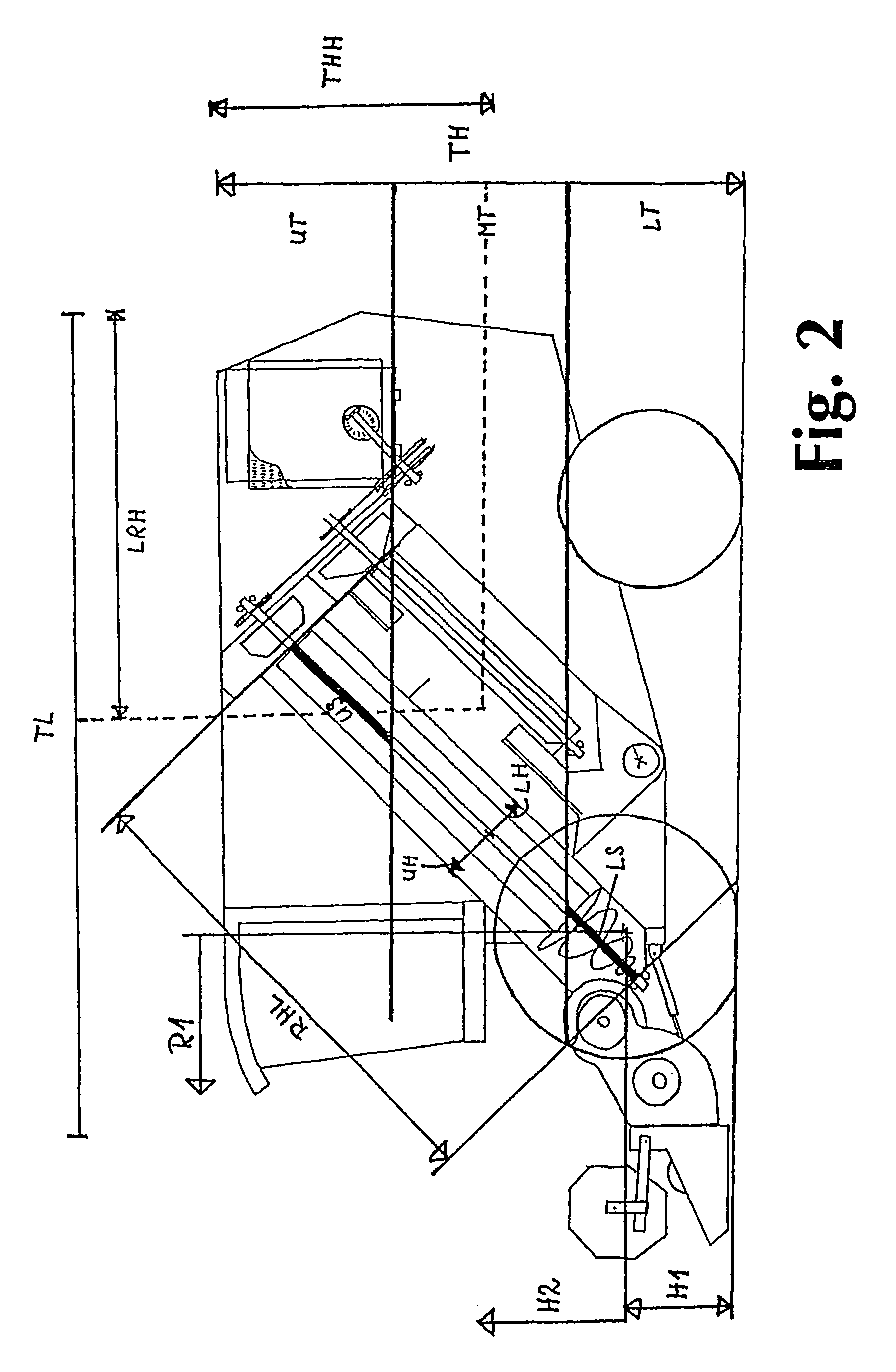Combine harvester
- Summary
- Abstract
- Description
- Claims
- Application Information
AI Technical Summary
Benefits of technology
Problems solved by technology
Method used
Image
Examples
Embodiment Construction
[0016]A combine harvester 2 shown in FIG. 1 is equipped with a driver's cabin 4, an engine 6 with a cooling system 8, a front wheel 10 with a rotational axis 12, a rear wheel 14, a cutterbar 16, and a feeder house 18, which distributes the harvested material from the cutterbar 16 into the feeding opening 20 of the rotor housing 22. Inside of the rotor housing 22 there is arranged a separation rotor 24 which is rotatably driven by driving elements 26, here shown as pulley drives, from the power of engine 6. Seen along the rotational axis of the separation rotor 24 from the feeding opening 20 towards the dis-charge end 28 of the rotor housing 22, the front section of the separation rotor 24 comprises auger blades 30 which approximately define the length of the feeding zone where the harvested material is fed into the rotor housing 22. The middle and rearward section of the separation rotor 24 is equipped with beater plates 32 which approximately define the length of the separation zon...
PUM
 Login to View More
Login to View More Abstract
Description
Claims
Application Information
 Login to View More
Login to View More - R&D
- Intellectual Property
- Life Sciences
- Materials
- Tech Scout
- Unparalleled Data Quality
- Higher Quality Content
- 60% Fewer Hallucinations
Browse by: Latest US Patents, China's latest patents, Technical Efficacy Thesaurus, Application Domain, Technology Topic, Popular Technical Reports.
© 2025 PatSnap. All rights reserved.Legal|Privacy policy|Modern Slavery Act Transparency Statement|Sitemap|About US| Contact US: help@patsnap.com



